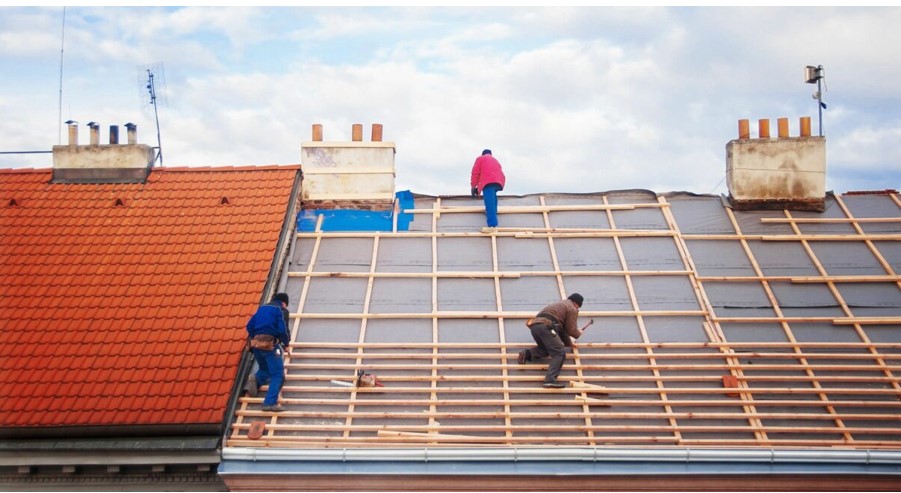Getting a new roof is a big project that can make your home safer, more energy-efficient, and better protected from the elements. But before the work begins, a little preparation can make the process smoother and less stressful. A roof replacement isn’t just about the roofing crew showing up—it involves dust, noise, vibrations, and a temporary shift in your daily routine. Knowing what to expect and taking the right steps can help minimize disruptions and keep everything on track.
Understanding the Roof Replacement Process
A roof replacement usually takes anywhere from a day to a week, depending on the size of your home and the complexity of the job. If the weather is cooperative and all materials are ready, most standard homes can have a new roof installed within two or three days. However, unexpected issues—like discovering rotten decking under old shingles—can add time. Knowing the general timeline and discussing potential delays with your contractor helps set realistic expectations.
Preparing the Inside of Your Home
Roofing work can cause vibrations that travel through your home, which means anything loosely attached to walls or ceilings might shift or fall. It’s a good idea to take down pictures, mirrors, or shelves that aren’t secured tightly. If you have fragile items on display, consider storing them in a safe place for the duration of the project.
Attics are particularly affected during roof replacements. Dust and debris often find their way into these spaces as old shingles are removed. If you store valuables in the attic, covering them with a tarp or sheet can keep them clean. While you're up there, it’s also a great time to check your ventilation and insulation—your contractor may be able to make necessary adjustments while the roof is open.
Preparing the Outside of Your Home
The area around your house will temporarily become a work zone. Roofing materials, tools, and debris will be moving around, so clearing the space makes things safer and more efficient. Move outdoor furniture, grills, planters, and anything else that could be in the way. If you have a garden bed close to the house, consider covering it with a tarp to prevent falling debris from causing damage.
If you have a swimming pool or hot tub, cover it to keep dust and nails from ending up in the water. Trimming tree branches that hang too close to your roof can also help give the crew more space to work. Keeping the grass short will make cleanup easier once the project is finished—loose nails and small pieces of debris are much easier to spot on a freshly cut lawn.
Making Arrangements for Family and Pets
A roof replacement can be noisy. Hammering, drilling, and materials being moved around can create an environment that’s disruptive, especially if you work from home or have small children. If you or your family members are sensitive to loud sounds, planning a temporary change of routine—such as spending the day elsewhere—might be worth considering.
Pets can also be affected by the sudden noise and activity. Dogs and cats may become anxious or try to hide. Keeping them in a quiet room away from the construction or boarding them for the day can help reduce their stress. It’s also important to remind children to stay away from the work zone to avoid accidents.
Ensuring Contractor Access and Safety
Roofing crews need clear access to their work area, so parking in the street or a neighbor’s driveway can free up space for materials and equipment. If you typically park close to your home, moving your vehicle to a safe distance will also protect it from falling debris.
Speaking with your contractor about safety measures is another step to take. Ask about the areas that should be avoided and whether they will be placing protective coverings over windows or fragile landscaping. Letting your neighbors know about the upcoming work is a courtesy that helps set expectations—roofing projects can be loud, and giving them a heads-up about potential disruptions can go a long way.
Post-Installation Cleanup and Inspection
Once the new roof is in place, the job isn’t completely done. A reputable roofing company will handle the cleanup, including removing old materials, sweeping the yard for nails with a magnet roller, and making sure no debris is left behind. However, it’s always good to do a walkaround yourself to check for anything that might have been missed.
Before finalizing payment, schedule a final inspection with your contractor. This is the time to ask questions, review any warranty details, and make sure you’re satisfied with the work. If your roof replacement included an upgrade in ventilation or insulation, your energy efficiency might improve, and it’s good to understand what changes were made.
Final Thoughts
Replacing a roof is a significant investment, but preparing in advance makes the process easier for both you and the roofing crew. Taking simple steps—like moving fragile items, clearing the yard, and making arrangements for pets—can prevent unnecessary hassles and ensure everything goes smoothly.
If you’re considering a roof replacement, working with a reliable contractor makes all the difference. LEN Roofing & Remodeling is a great choice for homeowners looking for quality work and a professional approach. Their expertise ensures that everything is handled with care, from preparation to cleanup, making the entire process hassle-free.

